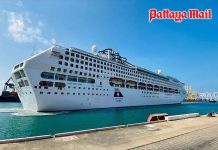
You might be surprised to know that the title And the Waltz Goes On is actually an orchestral piece composed by the actor Sir Anthony Hopkins, better known perhaps for his portrayal of the psychiatrist and cannibalistic killer, Dr. Hannibal Lecter in The Silence of the Lambs. He wrote the waltz over fifty years ago, before he made a name for himself in acting and he’s written several pieces since, including a work called The Masque of Time which was given its first performance a few years ago by the Dallas Symphony Orchestra.
Oddly enough, there is a British composer with a similar name, the broadcaster Antony Hopkins best known for his BBC radio series, Talking about Music, which ran for nearly forty years.
I suppose for Australians, mention of the waltz brings to mind Waltzing Matilda, the words of which were written by one Andrew Barton Paterson. He was more commonly known by the unlikely name of Banjo but not because he played one; it was evidently the name of his favourite horse. Banjo Paterson went on to write many poems about life in the outback but Waltzing Matilda is the best-known. Some years ago, it was discovered that 28 percent of Australians would like the song to be their national anthem.
As you might expect, the word “waltz” has German origins and almost certainly comes from the verb walzen, meaning “to turn or roll”. A similar dance in triple metre was popular as early as the 1580s but around the middle of the eighteenth century the rural people of southern Germany began dancing the Walzer, a dance for couples which caught on quickly in urban areas too.
While the older minuet remained popular with the aristocratic classes, it must have seemed terribly old-fashioned and stuffy to the younger crowd. Although the spectacle of two people dancing so intimately shocked many of the older generation, the waltz became something of a craze. It was especially fashionable in Vienna and around this time, one observer wrote that the Viennese were “dancing mad”.
Johann Strauss II dominated the dance music scene in Vienna during the nineteenth century and his orchestra provided the music for many grand balls. If these things interest you, the word “ball” comes from the Latin word ballare, meaning “to dance”. Strauss composed over four hundred waltzes, polkas, quadrilles and other types of dance music, as well as several operettas and a ballet. The waltz was so popular that it appeared in symphonies by Tchaikovsky, Dvoøák and Mahler in much the same way that the minuet was used in symphonies a hundred years earlier.
Unlike the waltzes of Johann Strauss, those of Frédéric Chopin are notably different in that they were not written for dancing but for concert performance. Chopin started writing waltzes for piano in 1824 when he was fourteen, and during his life wrote about eighteen of them although others have probably been lost.
Aram Khachaturian is the most important Armenian composer of the twentieth century. He wrote this music in 1941 and it was originally intended to accompany the play Masquerade by the nineteenth century painter and poet Mikhail Yuryevich Lermontov.
The music is best known today as a five-movement suite but the famous waltz theme didn’t come easily to Khachaturian. He evidently had something of a struggle composing it, but having got over that particular hurdle it seems that the rest of the waltz came to him easily.
This well-known Russian orchestra gives an energetic performance of this meaty piece and if you are the dancing type, you’ll probably be on your feet in minutes.
Ravel was a composer who invariably did things differently and this waltz is a fine example of his sophisticated use of musical ideas and brilliant orchestration. He called it a “choreographic poem for orchestra” and began it in 1919. It was conceived as a ballet but these days it’s usually performed as a concert piece.
This French orchestra gives a beautifully shaped and controlled performance, conducted by the distinguished South Korean pianist and conductor Myung-Whun Chung.
Although there are unmistakable echoes of the nineteenth century, this powerful work couldn’t be more removed from the innocent melodies of Johann Strauss that charmed the Viennese. It seems more like a nightmare from a haunted ballroom. It beings quietly with ominous rumbling of double basses and cellos but gradually the tempo and intensity increase, fragments of tune appear then swirling melodies are emerge. You can even get an unsettling sense of foreboding organic growth within the music, as it hurls itself towards an almost terrifying but inevitable conclusion.
 |
 |
 |





